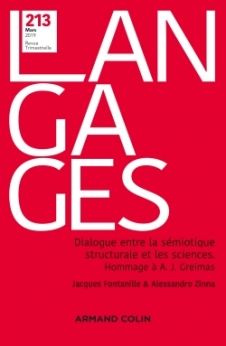
Langages nº 213 (1/2019)
Pour acheter ce numéro, contactez-nous
Recevez les numéros de l'année en cours et accédez à l'intégralité des articles en ligne.
Ce texte concerne le champ de la sémiotique de Greimas et celui de la psychanalyse de Freud et de Lacan. Le texte a pour but, d’un côté, de montrer les difficultés d’un dialogue et d’une recherche d’interface entre ces deux domaines de la signifiance et du psychisme humain et, de l’autre, d’indiquer quelques suggestions théoriques et tactiques pour les surmonter. À partir du moment où Lacan a émis la fameuse thèse selon laquelle l’inconscient était « structuré comme un langage » – ce qui indiquait, selon lui, le vrai sens d’un « retour à Freud » –, cette thèse a édifié une passerelle heuristique et légitime pour des études communes entre le champ du langage et celui de l’inconscient, entre les passions (le coeur de la sémiotique des affects) et les pulsions (le coeur de la psychanalyse de l’inconscient).
This article concerns the field of Greimas’ semiotics and that of Freud and Lacan’s psychoanalysis. The purpose of the text is, on the one hand, to show the difficulties of a dialogue and a search for an interface between these two domains of signifiance and affection and, on the other hand, to indicate some theoretical suggestions and tactics to cross. From the moment Lacan emitted the famous thesis that the unconscious was "structured as a language" – which indicated to him the true meaning of his "return to Freud"–, this thesis has built a heuristic and legitimate bridge for joint studies between the field of language and that of the unconscious, between passions (the heart of the semiotics of the thymic), and the drives (the heart of the psychoanalysis of the unconscious).